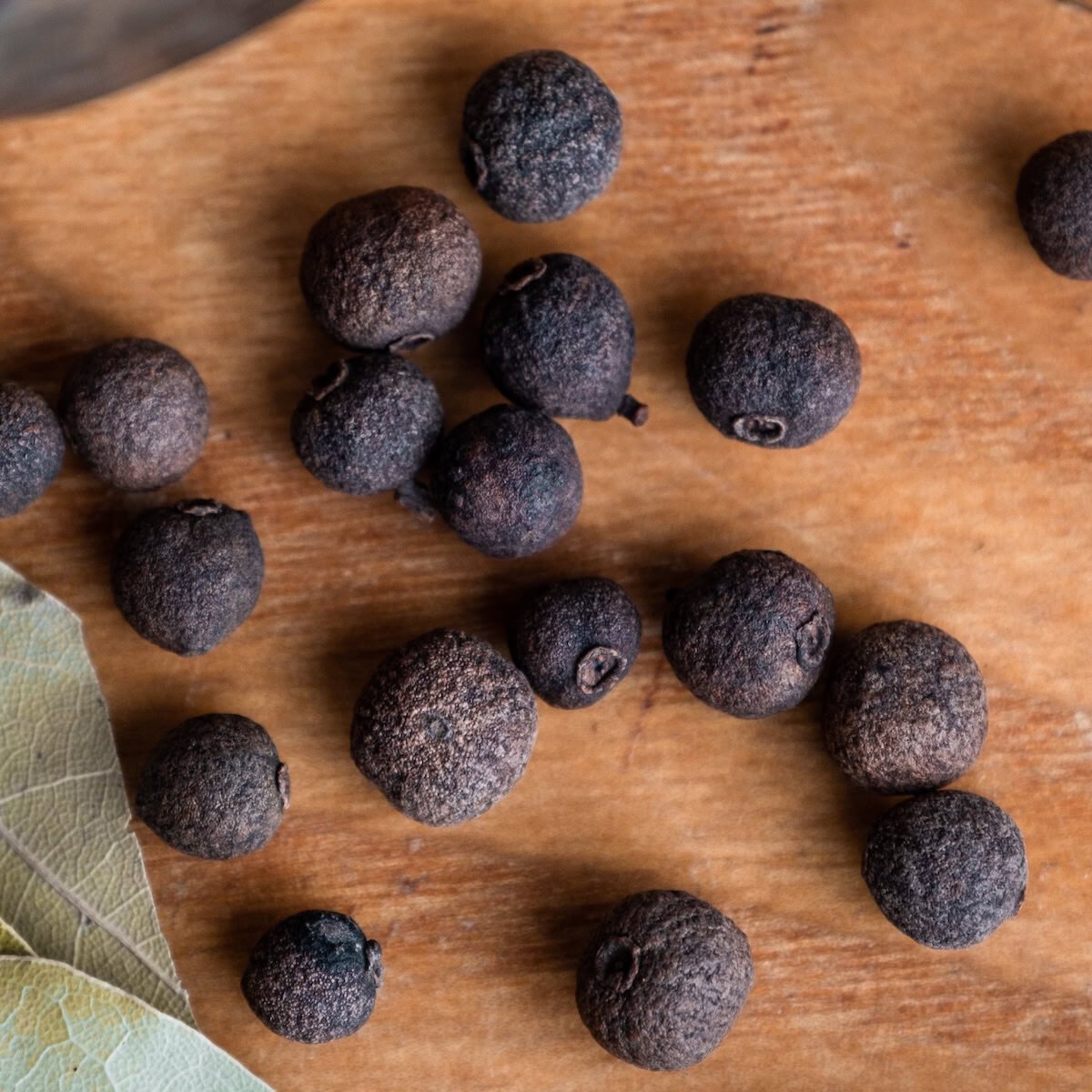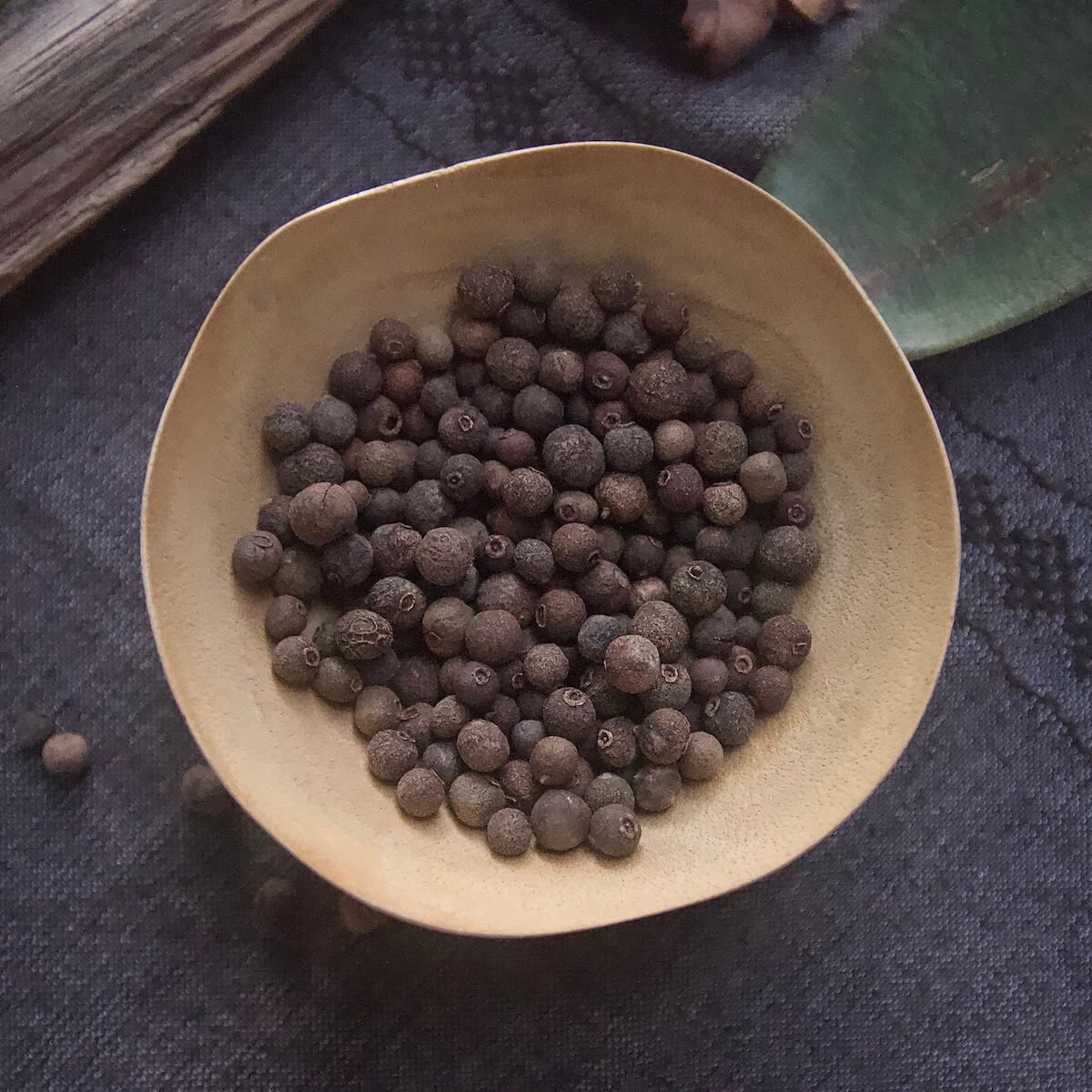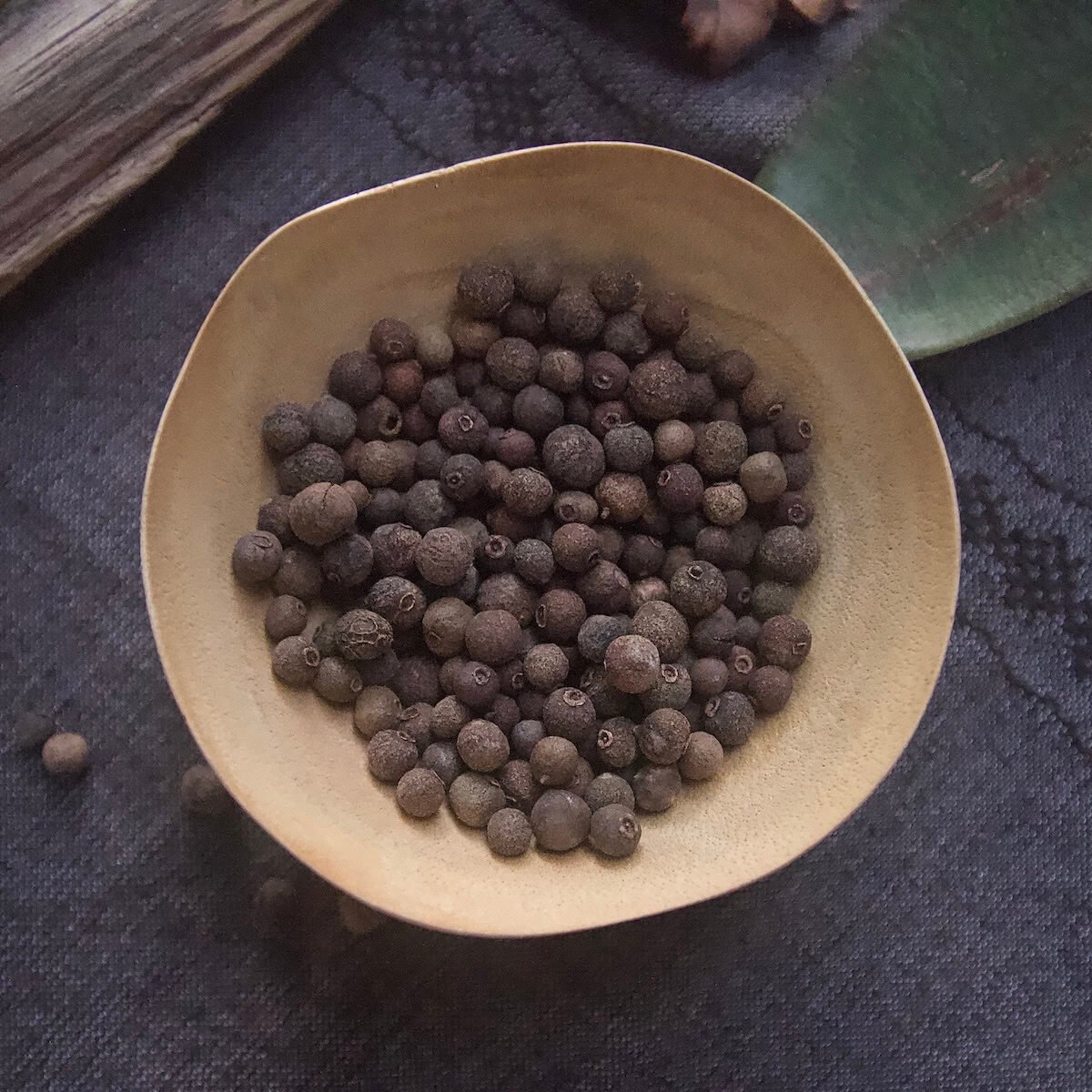Allspice
Allspice is the spice produced from the unripe fruit (often called "berries") of Pimenta dioica, a tropical evergreen tree in the myrtle family.

REGION OF ORIGIN
Allspice originated in the tropical rainforests of the Greater Antilles (particularly Jamaica), Southern Mexico, and Central America. It is the only globally important spice that is nearly entirely produced and exported from the Americas.
PART & COLOR
On the tree, ripe allspice fruit is a deep purplish red. But since unripe "berries" hold the highest concentrations of essential oils, they are harvested when they're still green. They transform during the curing process, shrinking into dark, slightly reddish brown balls. They have a rough surface due to tiny glands that hold their precious volatile oils. You can also use allspice leaves like bay leaves, and in Jamaica, jerk dishes are smoked with the wood of the tree ("pimento wood").
HARVEST
Allspice trees produce clusters of small white flowers that develop berries when pollinated. The flowers bloom over months, allowing for staggered harvesting. The season varies by region and climate, but core producers like Jamaica and Mexico harvest between July and September in carefully timed waves.

FLAVOR & AROMA PROFILE
Allspice is a marvel. Aptly named for its ability to mimic the flavors of many spices, it captures the deep warmth of cinnamon, the sharp sweetness of nutmeg, and the pungent kick of cloves.
It’s not uncommon to detect a touch of vanilla, and depending on its origin and preparation, it may reveal nuances of ginger, juniper, cardamom, and citrus. It even has a hint of peppery heat. Allspice thus has remarkable versatility. It can stand in for many other spices in a pinch, but it also complements them if you're looking for complexity.
CULINARY USES
All around the world, allspice is a cherished culinary wonder. In the Caribbean, it is the heart of the fiery Jamaican jerk seasonings that famously bring out the richness of meats like chicken, pork, and goat. It enhances Caribbean stews, sauces, curries, and rice dishes as well. In Mexico, allspice infuses moles, pipián sauces, and slow-cooked meats.
In North America and Europe, it is synonymous with festive baking, adding a nuanced layer of sweet warmth to the likes of pumpkin pie and gingerbread. It's also elemental to the spice blends berbere from Ethiopia and baharat from the Middle East. Allspice is even a common flavoring in many soft drinks, ketchups, and BBQ sauces—even chewing gum!
You can use whole allspice berries for a mild, sustained flavor—simply toss a few into the pot with your other ingredients. You can also grind them for a quick, intense burst—sprinkle this more concentrated flavor on baked goods and savory meats. It is potent, so start out small and adjust to taste.



